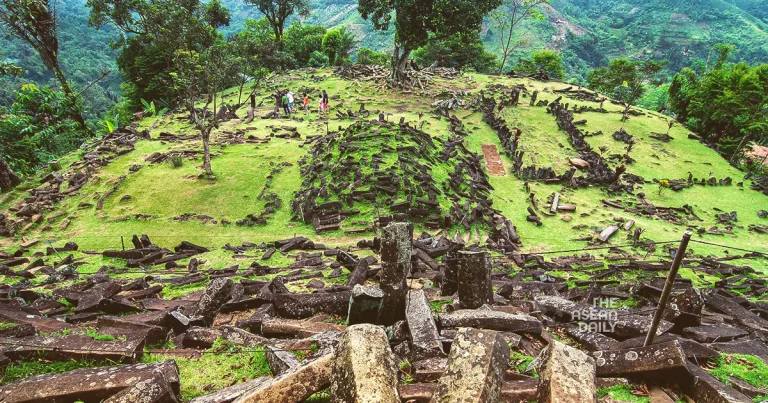28-11-2023 (JAKARTA) In the realm of ancient wonders, a new player has entered the pyramid race, challenging established contenders like Egypt and Peru. A recent publication in Archaeological Prospection in October 2023 unveils a groundbreaking claim by a team of archaeologists, geologists, and geophysicists: Gunung Padang in the Cianjur District of West Java Province, Indonesia, may not be a natural hill as previously believed but rather an ancient man-made structure.
Dr Danny Hilman Natawidjaja, an earthquake geologist and co-author of the paper, stumbled upon this revelation in 2011 while studying the region’s topography. Contrary to the typical rugged volcanic terrain, he discovered a hill with a peculiar shape and well-preserved surface. Subsequent research, employing ground-penetrating radar and 2D electrical resistivity tomography, suggests that the entire Gunung Padang structure, including the megalithic stone complex atop the hill, was crafted by humans around 8,000 to 25,000 years ago.
The pyramid unfolds in four distinct layers. The oldest, at the core, is a natural lava hill sculpted into a pyramidal shape by human hands. This is followed by layers of coarse sands, pillar-like structures, columnar rocks, and the meticulously placed megalithic stones on the surface.
The published paper marks the first comprehensive discussion of their findings, detailing the methodology used to date each section of the pyramid. Dr Hilman Natawidjaja expresses optimism that their discoveries will inspire further geo-archaeological studies, especially in Indonesia and other unexplored ancient sites globally.
Despite the excitement, the scientific community remains divided over the validity of the claims. Some, like Dan Joyce, Director Emeritus and Archaeologist at the Kenosha Museum Campus in Wisconsin, acknowledge the controversy but call for additional research to validate the dates through independent investigations and repetition of results.
Dr Hilman Natawidjaja welcomes the debate, acknowledging that skepticism is a natural part of scientific discourse. He emphasises the need for discussions and further studies, asserting that the pursuit of knowledge should foster enlightenment and unity rather than division.
As the ancient mysteries continue to unfold, Gunung Padang has opened a new chapter in the exploration of humanity’s past, challenging preconceptions and prompting a call for more rigorous investigation into the secrets buried beneath the earth’s surface.




